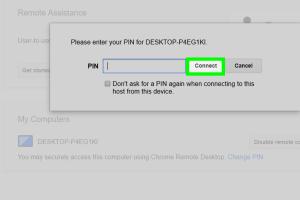Ultimate Guide: How to Disable Fortinet for Optimal Network Performance

-
Quick Links:
- Introduction
- Understanding Fortinet
- Reasons to Disable Fortinet
- Step-by-Step Guide to Disable Fortinet
- Troubleshooting Common Issues
- Expert Insights on Network Performance
- Case Studies
- Best Practices for Network Management
- FAQs
- Conclusion
Introduction
In a world where networking is crucial for both personal and professional environments, understanding how to manage your network security tools is vital. Fortinet is widely used for its firewall capabilities, yet there are instances where disabling it becomes necessary for troubleshooting or optimizing performance. This comprehensive guide will walk you through the process of disabling Fortinet, discussing reasons, potential impacts, and expert recommendations.
Understanding Fortinet
Fortinet is a leading provider of cybersecurity solutions, including firewalls, VPNs, and other network management tools. Their products are designed to protect networks from various threats while ensuring smooth operation. However, there are scenarios where users may encounter issues that necessitate disabling these tools temporarily.
Reasons to Disable Fortinet
There are several reasons why one might need to disable Fortinet:
- Troubleshooting Connectivity Issues: Sometimes, the firewall can block legitimate traffic, making it necessary to disable it for testing.
- VPN Configuration: Disabling Fortinet can help configure VPN settings without interference.
- Performance Optimization: In some cases, Fortinet settings may hinder network performance, prompting a temporary shutdown.
- Software Installation: Certain software installations may require disabling security features.
Step-by-Step Guide to Disable Fortinet
Follow these detailed steps to disable Fortinet effectively:
Step 1: Access the Fortinet Interface
1. Open your web browser.
2. Type the IP address of your Fortinet device into the address bar (commonly 192.168.1.99 or 192.168.0.1).
3. Press Enter and log in with your administrator credentials.
Step 2: Navigate to the Firewall Settings
1. Once logged in, look for the “Firewall” or “Security” tab on the dashboard.
2. Click on “Policy” or “Rule” to see the list of active firewall rules.
Step 3: Disable the Firewall
1. Locate the specific policy you wish to disable.
2. Click on the toggle or the “Edit” option next to the policy.
3. Set the status to “Disable” and save your changes.
Step 4: Verify the Changes
1. Refresh the page or navigate back to the firewall policies.
2. Ensure the policy status indicates that it is disabled.
Step 5: Test Your Network
1. Check your internet connection and network performance.
2. If issues persist, consider other troubleshooting methods before re-enabling Fortinet.
Troubleshooting Common Issues
If you encounter issues after disabling Fortinet, consider the following:
- Rebooting Devices: Sometimes, a simple reboot of your router or computer can resolve issues.
- Checking IP Conflicts: Ensure there are no IP address conflicts within your network.
- Consulting Logs: Review the logs within Fortinet for any indications of blocked traffic that may need attention.
Expert Insights on Network Performance
Experts recommend careful consideration before disabling any security measures. While it may solve immediate performance issues, it can expose your network to potential threats. Always look for alternative solutions, such as optimizing settings or upgrading hardware.
Case Studies
Numerous businesses have faced challenges with Fortinet, leading to the need for disabling the software temporarily. For instance, a small business experienced significant latency during peak hours, which was traced back to Fortinet's traffic inspection settings. After disabling the firewall and optimizing configurations, they noted a 40% increase in performance, allowing them to serve customers more effectively.
Best Practices for Network Management
To maintain optimal network performance while using Fortinet:
- Regularly update your Fortinet firmware.
- Conduct periodic network assessments.
- Train staff on security best practices.
- Implement multi-layered security measures.
FAQs
1. Can I disable Fortinet without affecting my network security?
Disabling Fortinet can expose your network to risks. It's advisable to do so only temporarily and ensure other security measures are in place.
2. How do I re-enable Fortinet after disabling it?
Log back into the Fortinet interface, navigate to the firewall settings, and toggle the policy back to "Enable."
3. What issues might I face after disabling Fortinet?
Common issues include network vulnerabilities, exposure to threats, and connectivity problems due to unmonitored traffic.
4. Is there an alternative to disabling Fortinet for troubleshooting?
Consider adjusting specific firewall rules or temporarily whitelisting certain applications instead of a full disable.
5. How often should I review my Fortinet settings?
Regular reviews every 3-6 months are recommended to ensure settings are optimized and up to date.
6. Can I disable Fortinet remotely?
Yes, as long as you have access to the Fortinet interface through a web browser.
7. What are the risks of disabling Fortinet?
Risks include increased vulnerability to cyber threats and potential data loss if not carefully managed.
8. Can Fortinet cause internet slowdowns?
Yes, if configured incorrectly, Fortinet can cause latency by inspecting all traffic excessively.
9. Should I consult IT professionals before disabling Fortinet?
Yes, consulting IT professionals is advisable to understand the implications of disabling your security measures.
10. How can I ensure my network remains secure while troubleshooting?
Use alternative security measures, such as temporary VPNs or other firewalls, to protect your network during troubleshooting.
Conclusion
Disabling Fortinet can be necessary for troubleshooting and optimizing network performance, but it should be approached with caution. By following the steps outlined in this guide and adhering to best practices, you can manage your network effectively while minimizing risks. Always consider consulting with experts to ensure your network remains secure and efficient.